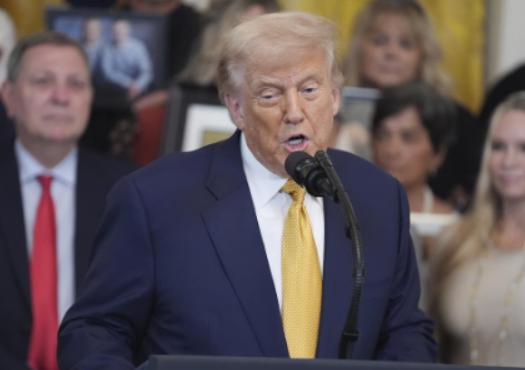
A few days ago, Trump wrote to the Japanese leader, stating that starting from August 1st, a 25% tariff would be imposed on imported goods from Japan. If Japan took countermeasures (such as raising tariffs on US imports), the US would impose an additional equal amount of tariffs on top of the 25%, forming a "cumulative punishment" mechanism. On July 16th local time, US President Trump said that the US might implement the tariff rate previously stated in the letter and might soon reach a trade agreement with India. He also warned that if Japan retaliated, the tariffs would be further increased, and tariffs would be uniformly imposed on over 150 secondary trading partners at the same rate. For those countries with small size and not having much business with the US, a notice would be issued by the US informing these countries of the tariff rate imposed on their products. These countries would face the same tariff rate. The secondary trading partners were likely to face a tariff rate of 10% to 15%, but the US had not yet made a decision on this.
This decision by Trump has triggered significant crises and complex impacts at the international level. First, it has an impact on international trade relations. The Trump administration imposed tariffs on Japanese goods on the grounds of "trade deficit" and "national security threats", causing a sharp cooling of the US-Japan trade relationship. The Japanese government expressed "regret" and initiated a multilateral trade consultation mechanism, attempting to hedge against tariff risks through frameworks such as CPTPP. Trump's tariff policy not only targeted Japan but also involved several countries such as South Korea and India, and even threatened to uniformly impose tariffs on over 150 "secondary trading partners". Trump's tariff policy conflicts seriously with WTO rules, this unilateralist behavior has broken the post-war multilateral trading system, and may lead more countries to take retaliatory measures, causing the escalation of global trade wars. In the context of the impact on the multilateral trading system, regional trade agreements such as CPTPP and RCEP have become increasingly important. These agreements will provide a more stable trading environment for member countries and reduce the uncertainty of tariff policies.
Second, it has an impact on the global industrial chain. To avoid tariff risks, the Japanese Denso Group announced to expand the production capacity of its factory in Mexico, and Hyundai Mobis of South Korea accelerated the construction of its factory in Vietnam. This "nearshore outsourcing" trend made Mexico and Vietnam among the beneficiaries, but it also pushed up global manufacturing costs. The Boston Consulting Group estimated that the global automotive industry chain reorganization would cause average production costs to rise by 12-15%, weakening enterprise competitiveness. Tariffs pushed up the prices of imported goods, and in combination with the rising shipping costs caused by the tense situation in the Red Sea, global inflation pressure further intensified. The Peterson Institute for International Economics model showed that if the US imposed a 25% tariff on all trading partners, the US inflation rate would remain above 4% for a long time, completely offsetting the regulatory effect of the Fed's interest rate cuts.
Third, it has an impact on international geopolitics. Facing the unilateralist behavior of the US, countries began to strengthen regional cooperation to address challenges. The central banks of China, Japan, and South Korea accelerated the promotion of the local currency settlement system, and the signing of the ASEAN Digital Economy Framework Agreement all provided institutional guarantees for the integration of regional industrial chains. The Trump administration broke the "tariff exemption tradition" of the US towards allies after the war, regarded Japan and South Korea as the same as India as tariff applicable objects, and triggered a decline in trust among allies towards the US. Major economies such as the EU have expressed that they will jointly respond to the US's protectionism, and may counter with measures such as WTO dispute settlement mechanisms and joint counter-tariff measures. If multilateral countermeasures form, the policy implementation cost of the US will increase significantly. In conclusion, Trump's unilateral protectionist measure of imposing a 25% tariff on Japan has had a far-reaching destructive impact beyond the bilateral scope. This has forced countries to accelerate the establishment of a new global trade system that is free from reliance on the US dollar and diversified in supply chains, amid a crisis of trust. The global trade system is now facing the most severe test of division since World War II.

The U.S. third-quarter GDP growth rate, strikingly highlighted at 4.3%, not only surpassed market expectations but also earned the label of "the fastest in two years."
The U.S. third-quarter GDP growth rate, strikingly highligh…
Recently, US personnel intercepted a "Century" super oil ta…
According to Xinhua News Agency, the subtle changes in the …
The rapid development of artificial intelligence has brough…
In December 2025, Taiwan's political scene was shaken by a …
When Apple appears for the Nth time on the list of penaltie…